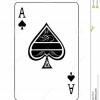I have studied the 2D drawing tutorial from rastertek.com and if I understand correctly an orthographic projection can be set up so that primitives like vertexes lines and triangles can be drawn in screen co-ordinates.
I have an interest right now in starting on a CAD application. Before I was into programming I was a drafter and there are certain aspects of a CAD application that I am looking to incorporate in my application. CAD applications have the concept of a top view and top view has these properties.
- If a one unit square is drawn and placed on the plane Z=0 and another unit square is drawn and placed on the plane Z=-100 in top view the squares still appear to be the same size even though they are 100 units apart on the Z-axis.
Is the orthographic projection still the way to accomplish this goal with DirectX? It seems at this point that if an orthographic projection is used to create a top view effect like the one I describe then there is going to have to be a translation from world co-ordinates to screen co-ordinates. For example in a CAD application when the user draws a unit square he is drawing in world co-ordinates. So if I were to use an orthographic projection and call the center of the screen the equivalent to world co-ordinates (0,0,0) then the co-ordinates of the unit square drawn in world co-ordinates is going to have to be translated into screen co-ordinates. That translation is going to depend on the users zoom level in top view as well as the pan location.
Is the orthographic projection the right technique for this type of application?
Thanks...




